- Home
- Alison Weir
Queens of the Conquest: England’s Medieval Queens Page 12
Queens of the Conquest: England’s Medieval Queens Read online
Page 12
Ulberga had to walk nine steps carrying an iron bar weighing one pound that had been heated over a fire. If her hand healed within three days—and this had to be certified by a priest—it would be deemed that divine judgment had decided in her favor. She won her case, which suggests that the iron could not have been very hot.9 This may have been an example of how a pragmatic approach could be taken to a barbaric means of seeing that justice was done, and it may be that the Queen had commanded it.
Matilda was responsible for the early education of her children, and although she and William appear to have made joint decisions about this with “the greatest care,” she would have exerted considerable influence over her brood. Like William, she was “a pious parent,” sharing his determination to teach their offspring Christian doctrine. Sadly, it sometimes had little effect. Robert grew up preferring pleasure to piety, and Rufus to display contempt for religion. This may have been William’s fault for being a repressive parent, or Matilda’s; evidence will emerge that she was overindulgent.
Tutors named Rahere and Hilgerius—who was attesting Robert’s charters when his pupil was in his teens10—and a grammatician called Theobald were initially appointed to educate the heir, but Lanfranc himself later tutored the boys, while the girls were sent to Matilda’s abbey of Holy Trinity at Caen. Here they were tutored by a Flemish monk, Arnold of Chocques, whose oratory was renowned, and who had been appointed by the Duke and Duchess to educate the nuns. He taught Cecilia the trivium, an essential part of the universal medieval academic curriculum that comprised grammar, rhetoric and logic, probably because she was going to be a nun.11 The girls could read Latin, which Matilda herself may have taught them; Cecilia was known for her literary bent,12 and Constance and Adela were impressively learned,13 while Cecilia and Adela won plaudits for their beauty. Of Adela, it was said: “She surpasses her father in her appreciation of poetry and her knowledge of books. She rewards the merits of poets, she has critical judgment, and she has her own store of songs and poems to dictate.”14
—
Matilda’s return to Normandy was clouded by troubles.15 There was a rebellion in Maine, and the King of France and Hoël II, Duke of Brittany, mounted a joint invasion of the duchy. Matilda sent an urgent request for help to William, who immediately dispatched William FitzOsbern, “the bravest of the Normans,”16 to defend her. Later in 1069, William himself came to Normandy, and invested Robert with the county of Maine.
This was an age in which the appointment of bishops had great political significance. Many of those appointed by William were Normans, and in 1070 Matilda and Robert joined him in persuading their friend Abbot Lanfranc to become archbishop of Canterbury. A reluctant Lanfranc appealed to his old friend and former spiritual father, Herluin, Abbot of Bec-Hellouin, for counsel, but the saintly old man only urged him to go to the Queen and her son Robert and seek their advice.17 When he did, they both “prayed that Lanfranc would accept” the primacy.18 It was due to their influence, and that of Abbot Herluin and Pope Alexander II, that he did so. He was consecrated at Canterbury on 29 August.
As archbishop, Lanfranc would fulfill William’s wishes and reform the English Church on the Norman model. Both William and Matilda disapproved of ecclesiastical abuses, and she supported his determination to rid the English Church of slack practices. With Lanfranc’s staunch assistance, William vigorously revived “the observances of religion, which were everywhere grown lifeless in England.” Senior ecclesiastical offices were often filled by Normans, who were zealous to implement the King’s reforms. “You might see churches rise in every village, and monasteries in the towns and cities, built after a style unknown before.”19 William and his sons and their wives presided over the foundation and building of many churches, religious houses and magnificent Romanesque cathedrals, many of which still stand today as testimony to their religious fervor. Some, of course, look very different now, where they survive intact; when they were new, they would have been decorated throughout with vivid wall paintings, to instruct illiterate congregations in biblical teachings and stories. Lanfranc encouraged learning in the monastic schools, which would in time provide clerks to run the royal administration.
Matilda’s bounty to the Church was lavish, yet the chronicler of Abingdon Abbey, a great Saxon foundation, struck a discordant note when he asserted that “the ornaments of the sanctuary itself were stolen” by the Queen, who commanded that they be sent to her so that she could choose objects to enrich a monastery in Normandy. The Abbot sent her a selection that did not include the most valuable items, but Matilda guessed she was being duped and demanded “more precious treasures.” The Abbot had no choice but to comply, and she despoiled his abbey of its richest possessions: “a chasuble wonderfully embroidered throughout with gold; an alb with a stole, and a gospel book decorated with gold and precious gems.”20
—
The death of Matilda’s brother, Baldwin VI, in July 1070 precipitated a dynastic crisis in Flanders. His son, Arnulf III, was a minor, therefore his widow, Richilde of Hainault, was appointed regent. Because Richilde, “with a woman’s ambition, was forming plans beyond her sex” and imposing punitive taxes on the people, Matilda’s younger brother, Robert the Frisian, rose in rebellion,21 and after just a few months Arnulf and Richilde were overthrown.
Robert the Frisian was no friend to William, and soon the King’s enemies were seeking refuge at the court of Flanders. William had his hands full in England, dealing with a rebellion led by Hereward the Wake in the Fens and the subversive activities of Earls Edwin and Morcar. Matilda’s mother, the Countess Adela, disapproved of her son Robert depriving Arnulf of his rights, and she and Matilda raised money and troops in support of Arnulf, and sought the aid of King Philip of France, overlord of both Flanders and Normandy.22 In December 1070, Matilda sent the trusty William FitzOsbern at the head of “a large army” into Flanders23 to support her in a joint enterprise with Philip against her brother Robert. He rode off “gaily, as if to a tournament.”24
Soon after he arrived, Richilde proposed that FitzOsbern marry her, with a view to his wresting back Flanders from Robert.25 But in February 1071, Robert emerged victorious at the Battle of Cassel, in which both Arnulf and FitzOsbern were killed. This left William in great grief at the loss of his friend and Robert indisputably Count of Flanders, which put an end to the alliance between Flanders and Normandy. There was “mutual and lasting hostility between the Normans and Flemings, partly because of the slaying of the Queen’s brother [nephew] and other kinsfolk, but chiefly because of the fate of William fitzOsbern.”26 Count Robert made alliances with England’s enemies and offered Edgar Atheling asylum in Flanders. Matilda was “deeply afflicted,” especially by “the cruelty of one brother, which caused the loss of her beloved nephew and a number of her friends,” for which she blamed Robert the Frisian. It had also, temporarily, disturbed the peace in Normandy.27
—
By 1072, after William had laid waste the north and subdued other parts of the kingdom that had resisted his rule, the Norman Conquest was complete. “At last, for a while, the storm of wars and rebellions dying out, he now powerfully holds the reins of the entire English monarchy and even more prosperously reigns in glory.”28 Feudalism—the system of land tenure and overlordship based on service and obligation, under which everyone owed fealty to an overlord, and the lowest ranks of society were bound in serfdom—was established in England, and the administration overhauled. From the castles that were springing up throughout the land, the new Norman aristocracy governed the conquered Saxons, or defended their lands and vassals from attack. But “there was much trouble in these times and very great distress. The King oppressed the poor,” inflicting heavy taxes on them, for “he was given to avarice and greedily loved gain. The rich complained and the poor murmured, but he was so sturdy that he reckoned nought of them.”29
The indigenous Saxon population was oppressed by its conquerors and regarded as an inferior race. The old Saxon nobility
was inexorably replaced by a land-hungry Norman military aristocracy. Inequality and corruption flourished, as ancient customs were swept away by the new order. The English language was abhorred by the Normans “with such intensity, that the laws of the land and the statutes of the English kings were treated of in the Latin tongue. Even in the very schools, the rudiments of grammar were imparted to the children in French and not in English. The English mode of writing was also abandoned, and the French manner adopted in charters and in all books.”30 The King did not long persevere in his short-lived attempt to learn English.31 Norman French was now established as the official language of the court, and would remain so until the fourteenth century.
William’s rule was harsh but effective. He abolished capital punishment but replaced it with castration and mutilation. Small wonder that, after his death, the Anglo-Saxon Chronicle applauded “the good order he kept in the land, so that a man of any substance could travel unmolested throughout the country with his bosom full of gold. No man dared to slay another, no matter what evil the other might have done to him. If a man lay with a woman against her will, he was forthwith condemned to forfeit those members with which he had disported himself.” This was enlightened justice for women in an age that regarded them as chattels. Nevertheless, added the chronicler, “a hard man was the King.”
15
“An Untimely Death”
Early in 1072, William visited Normandy. Matilda probably returned to England with him, for at Easter they held court together at Winchester. It was here, in the palace chapel, that a long-running battle for primacy between the Archbishops of Canterbury and York was resolved, with William acknowledging the superior right of Canterbury. Matilda’s mark is on the deed.1
At Whitsun the King and Queen stayed at Windsor, probably in the royal manor of Kingsbury, built by Edward the Confessor at Old Windsor. William favored this “palace of kingly splendour”2 on account of it being “suitable and convenient” due to its closeness to the River Thames and “a forest fit for the chase.”3 Set in twenty-two acres, it stood three miles from the site of the new castle that William had begun building around 1070 to the northwest on a steep hill at Clewer, a hundred feet above the Thames, as part of a ring of nine castles raised as strategic defenses surrounding London.4 Not only was this a prime key military location, but the new castle was surrounded by the old hunting forest of the Saxon kings, later to be enclosed as Windsor Great Park.5
The first Norman castle at Windsor consisted of a circular wooden keep on a high mound (or motte) on the crest of the hill, where the Round Tower now stands, and two large baileys covering thirteen acres, containing various timber buildings and surrounded by a great palisade.
The Chronicle of Abingdon records that, sometime after Adelelm of Jumièges became abbot in 1071, Matilda was residing at Windsor while the King was in Normandy, but since there is no record of her being in England without him, this was probably at a time when he was elsewhere in the kingdom. While there, she heard a complaint by one Alfsi, the King’s bailiff in Sutton Courtenay, who had with impunity cut and carried off wood from Abingdon Abbey’s estate in Cumnor for the King’s use. The Abbot had come after him with a vengeance, beating him with a stick and forcing Alsi to jump in the River Ock, where he hid in water up to his neck. Understandably he was much aggrieved, but the Abbot got to the Queen before him, and offered her money to compensate for his treatment of Alfsi. She decreed that the bailiff must not exploit his position by taking the abbey’s property.6
It may have been at this time that Matilda befriended Ingulph, a Norman clerk of the King and future abbot of Croyland, who later recalled that “my most illustrious lady, Queen Matilda, always used her good offices for me with my lord the King, often relieved me by her alms-deeds, and very frequently aided me in all matters of business and cases of necessity.”7
—
Later in 1072, when the King of Scots threatened to invade England, Matilda returned to Normandy for her own safety, and again ruled as co-regent with Robert Curthose.8 William had joined them by early 1073. By now he was “so powerful that there was no one in all England, all Normandy, all the province of Maine, who dared lift a finger against his rule.”9 With his authority in England well established, he was able to spend more time in Normandy, and would actually be there more often than he was in England in the years to come.10
—
Hunting was one of the absorbing passions of the medieval upper classes. Regarded as an aristocratic sport, it provided food for the royal or lordly table, exercise, recreation and of course the thrill of the chase. William loved hunting to the point of obsession. “He delighted to follow the chase, I will not say for days, but even months together.”11 He established twenty-two royal preserves, including Cranborne Chase and Poorstock, both in Dorset. The greatest of them was the vast New Forest, which was created solely to satisfy the needs of a king whose chief passion was hunting. To make this royal hunting ground, he commandeered great stretches of land in Hampshire, destroying churches and more than twenty villages, turning out the inhabitants so that “he might there pursue his pleasures.”12 He passed fierce forest laws to protect it: “If anyone killed a stag or a wild boar, his eyes were put out. Beasts of chase he cherished as if they were his children.”13 Many of his subjects resented what they perceived to be a wanton waste of good land, and it was prophesied that the New Forest would bring disaster to William and his descendants.
Matilda’s second son, Richard, was said to be the one who most resembled William in appearance. “He afforded his noble father hopes of his future greatness; he was a noble youth of an aspiring disposition, considering his age.”14 There were rumors that the scholarly Richard was intended for the Church. But on 13 September 1074,15 “an untimely death quickly withered the bud of this promising flower.”
There are varying accounts of how Richard died. William of Malmesbury first stated that, “while hunting deer in the New Forest, he contracted a disorder from a stream of foul air,” but in a revised text he says Richard was “hanged by the throat on the branch of a tree when his horse ran underneath.” Orderic stated that, galloping in pursuit of a wild beast, he was “badly crushed between a strong hazel branch and the pommel of his saddle, and mortally injured.” Robert of Torigni asserts that he was riding so fast that he collided with the branch of a tree, which smacked him on the head and toppled him from his horse.16 Richard did not die immediately, but lingered for a few days before making his confession, receiving the Last Sacrament and passing away, “to the great sorrow of many of the English.”17
He was only of tender age and learning to hunt when he died.18 He had not yet received the belt of knighthood,19 which has led to speculation that he was between thirteen and twenty-two.20 There was no set age for knighthood in this period, but most achieved the accolade at eighteen.21 The Conqueror’s other sons were knighted at the ages of sixteen or seventeen (Rufus) or eighteen (Henry). There is no record of Robert being dubbed a knight. Richard was born before Rufus, thus he was between fourteen and eighteen at most when he died.
His grieving parents made generous gifts in their son’s memory.22 Richard was buried in Winchester Cathedral, in the south choir aisle, in a stone sarcophagus that is still almost in its original position, on a low wall supporting the choir arcade piers. The inscription survives: INTVS EST CORPVS RICHARDI WILLHELMI CONQVESTORIS FILII ET BEORNÆ DUC (Within this wall is the body of Richard, son of William the Conqueror and Duke of Beornia). With his death, the prophecy about the New Forest appeared to be fulfilled.
16
“The Praise and Agreement of Queen Matilda”
Matilda was briefly regent of Normandy early in 1074, but William spent most of that year in the duchy with her and their children. With Richard gone, he “blessed and favoured” Rufus and Henry above Robert, for they were “always dutiful” to their father and for that “received his hearty blessing.”1 Rufus could do no wrong, “always obedient, displaying himself in battle
before his father’s eyes, and walking by his side in peacetime,”2 although even Rufus may have found his father’s high expectations daunting, for they may have been one cause of a stutter he developed, which grew worse when he was agitated.3 It must have grieved Matilda to see her favorite son excluded. Certainly it angered Robert.
William had recently written to congratulate the new Pope, Gregory VII, on his election, and Gregory had responded warmly. In April 1074 he also wrote to his “beloved daughter” Matilda, having heard praiseworthy reports from William’s barons of her generosity, love and humility, which he regarded as “certain hope” of her eternal salvation. “Urge your husband, do not cease to suggest useful things to his soul,” he exhorted, “for it is certain that, if the infidel husband is saved by a believing wife, a believing husband can be made better by a believing wife.”4
In May and November 1074, the ducal family were at Rouen, having stayed at Lillebonne—where nothing now remains of William’s castle—and other places in the intervening months. Late in the year, William returned to England.
He was back in Normandy between April and the late autumn of 1075. At Easter, he and Matilda held court at Fécamp, where, on 5 April, with great state, William gave their daughter Cecilia to be consecrated as a nun before John of Avranches, Archbishop of Rouen.5 It had been nine years since Cecilia had entered Holy Trinity as an oblate, which was a long time in an age in which the novitiate (the probationary period before a nun made her final vows) was in theory supposed to last for a year, but in practice often lasted months or even weeks.6 A probationary year had to be served beforehand, so the earliest age at which a nun could take final vows was between thirteen and fourteen. In 1075 Cecilia was aged between nineteen and twenty-one, and had waited at least six years to be professed. Possibly she had wanted time to test her vocation.

 Richard III and the Princes in the Tower
Richard III and the Princes in the Tower Britain's Royal Families: The Complete Genealogy
Britain's Royal Families: The Complete Genealogy The Lady in the Tower: The Fall of Anne Boleyn
The Lady in the Tower: The Fall of Anne Boleyn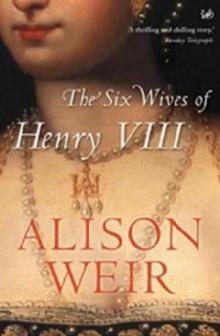 Six Wives of Henry VIII
Six Wives of Henry VIII Elizabeth of York: A Tudor Queen and Her World
Elizabeth of York: A Tudor Queen and Her World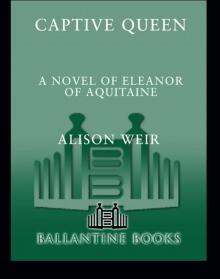 Captive Queen
Captive Queen Innocent Traitor
Innocent Traitor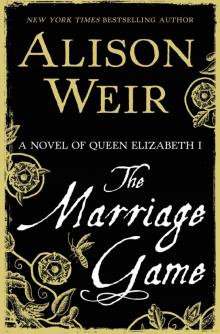 The Marriage Game
The Marriage Game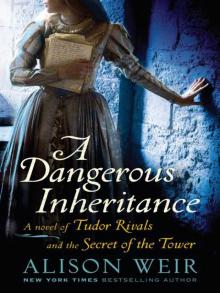 A Dangerous Inheritance
A Dangerous Inheritance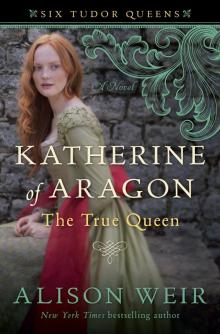 Katherine of Aragón: The True Queen
Katherine of Aragón: The True Queen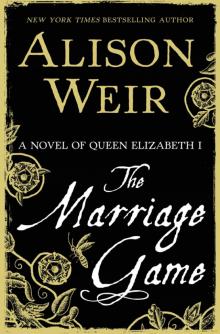 The Marriage Game: A Novel of Queen Elizabeth I
The Marriage Game: A Novel of Queen Elizabeth I Princes in the Tower
Princes in the Tower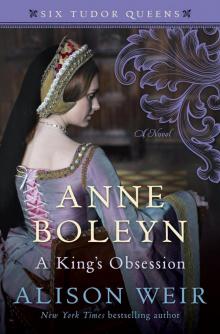 Anne Boleyn: A King's Obsession
Anne Boleyn: A King's Obsession Traitors of the Tower
Traitors of the Tower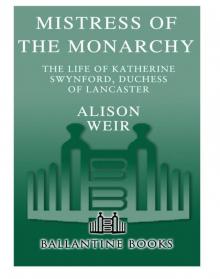 Mistress of the Monarchy: The Life of Katherine Swynford, Duchess of Lancaster
Mistress of the Monarchy: The Life of Katherine Swynford, Duchess of Lancaster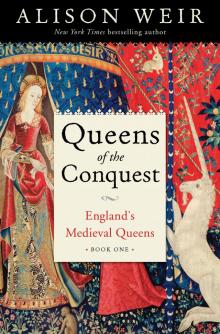 Queens of the Conquest: England’s Medieval Queens
Queens of the Conquest: England’s Medieval Queens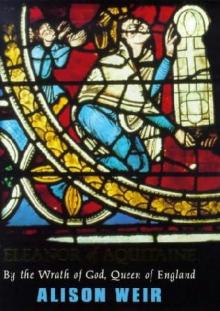 Eleanor of Aquitaine: A Life
Eleanor of Aquitaine: A Life Mary, Queen of Scots, and the Murder of Lord Darnley
Mary, Queen of Scots, and the Murder of Lord Darnley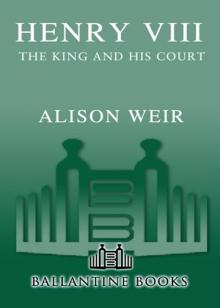 Henry VIII: The King and His Court
Henry VIII: The King and His Court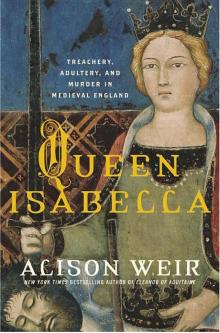 Queen Isabella: Treachery, Adultery, and Murder in Medieval England
Queen Isabella: Treachery, Adultery, and Murder in Medieval England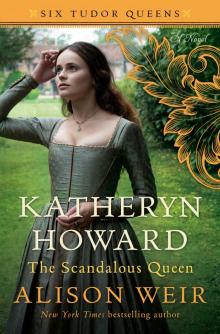 Katheryn Howard, the Scandalous Queen
Katheryn Howard, the Scandalous Queen Arthur- Prince of the Roses
Arthur- Prince of the Roses The Wars of the Roses
The Wars of the Roses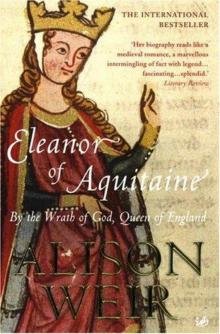 Eleanor of Aquitaine: By the Wrath of God, Queen of England
Eleanor of Aquitaine: By the Wrath of God, Queen of England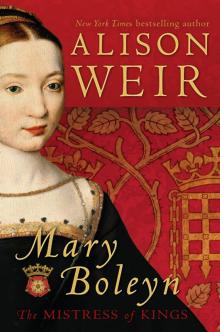 Mary Boleyn: The Great and Infamous Whore
Mary Boleyn: The Great and Infamous Whore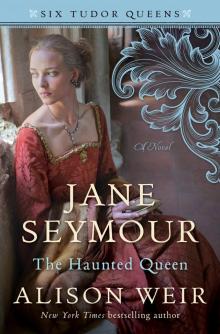 Jane Seymour: The Haunted Queen
Jane Seymour: The Haunted Queen Anna of Kleve, the Princess in the Portrait
Anna of Kleve, the Princess in the Portrait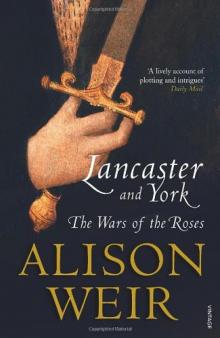 Lancaster and York: The Wars of the Roses
Lancaster and York: The Wars of the Roses The Grandmother's Tale
The Grandmother's Tale The Princess of Scotland (Six Tudor Queens #5.5)
The Princess of Scotland (Six Tudor Queens #5.5)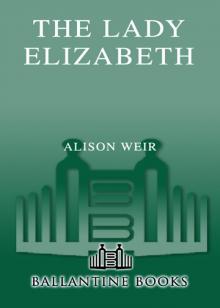 The Lady Elizabeth
The Lady Elizabeth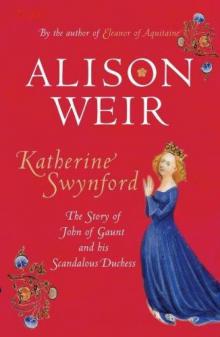 Katherine Swynford: The Story of John of Gaunt and His Scandalous Duchess
Katherine Swynford: The Story of John of Gaunt and His Scandalous Duchess The Curse of the Hungerfords
The Curse of the Hungerfords The Lost Tudor Princess: The Life of Lady Margaret Douglas
The Lost Tudor Princess: The Life of Lady Margaret Douglas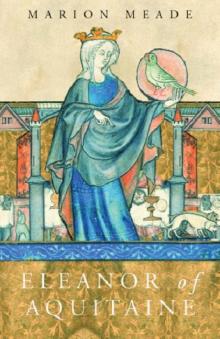 Eleanor of Aquitaine
Eleanor of Aquitaine Mistress of the Monarchy
Mistress of the Monarchy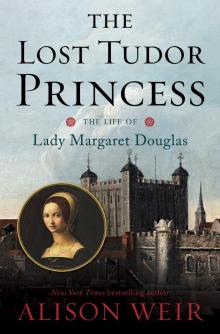 The Lost Tudor Princess
The Lost Tudor Princess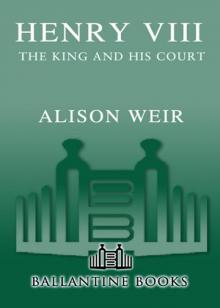 Henry VIII
Henry VIII Anne Boleyn, a King's Obsession
Anne Boleyn, a King's Obsession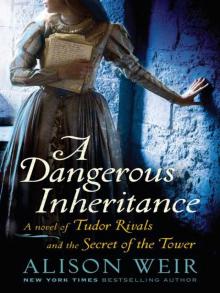 A Dangerous Inheritance: A Novel of Tudor Rivals and the Secret of the Tower
A Dangerous Inheritance: A Novel of Tudor Rivals and the Secret of the Tower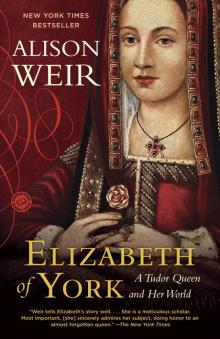 Elizabeth of York
Elizabeth of York Katherine of Aragon, the True Queen
Katherine of Aragon, the True Queen Katherine Swynford
Katherine Swynford Wars of the Roses
Wars of the Roses Queens of the Conquest
Queens of the Conquest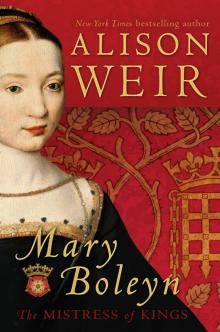 Mary Boleyn
Mary Boleyn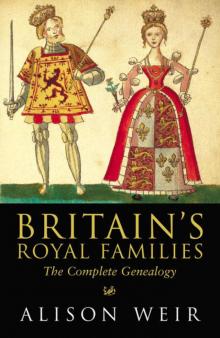 Britain's Royal Families
Britain's Royal Families The Tower Is Full of Ghosts Today
The Tower Is Full of Ghosts Today Life of Elizabeth I
Life of Elizabeth I Anne Boleyn A King's Obssession
Anne Boleyn A King's Obssession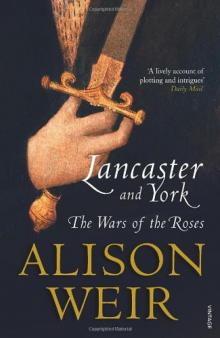 Lancaster and York
Lancaster and York Jane Seymour, the Haunted Queen
Jane Seymour, the Haunted Queen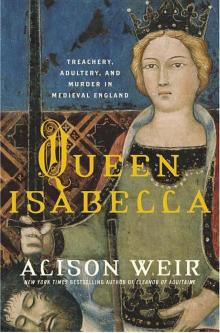 Queen Isabella
Queen Isabella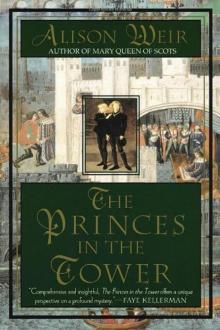 The princes in the tower
The princes in the tower